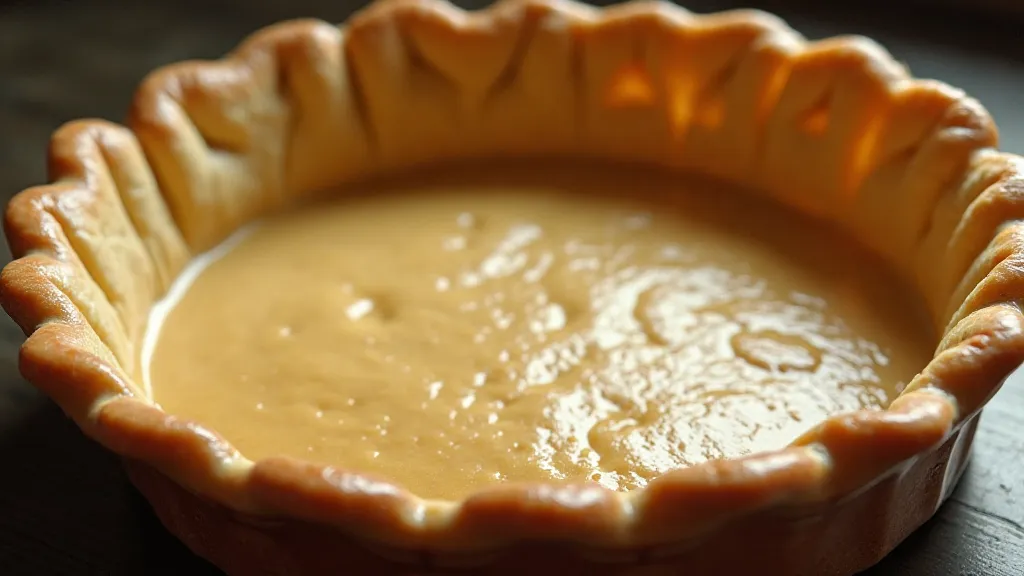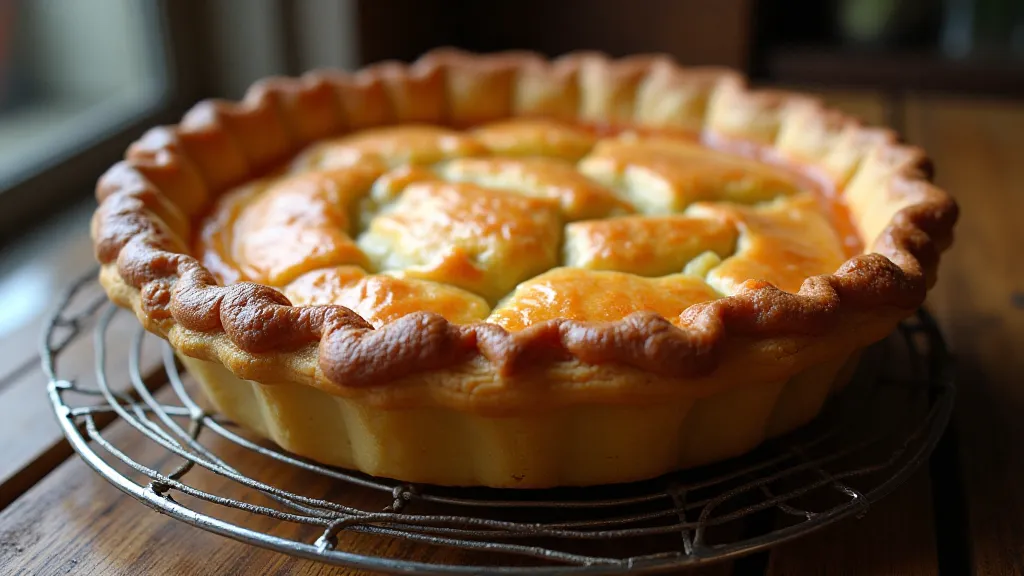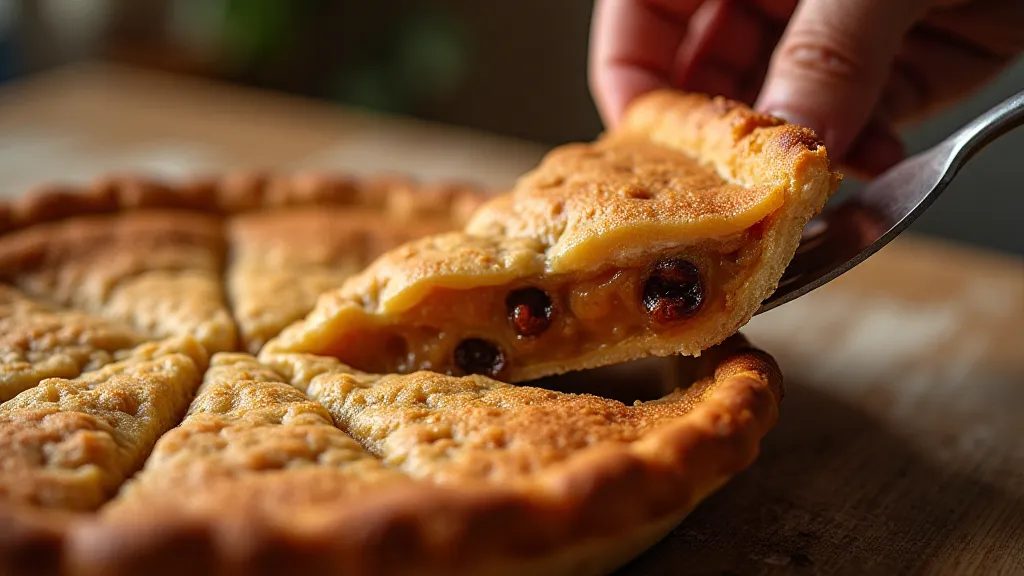Water Pie: A Surprisingly Delicious Zero-Waste Treat
The Great Depression demanded resourcefulness. Families stretched every scrap of food, and creativity flourished in the kitchen. While stories of “Hoover Stew” and other desperate meals are well-known, some of the most fascinating culinary creations emerged not from scarcity of ingredients, but from a desire to use *everything* available. One such gem is Water Pie – a seemingly impossible dessert that’s surprisingly delicious and a true testament to Depression-era ingenuity.
The Story Behind the Pie
The name "Water Pie" might sound alarming, but don't let it fool you. It doesn’s actually taste like water! The water acts as a crucial ingredient, helping to bind the ingredients together when fats like butter or shortening were scarce. Imagine trying to make a pie crust with minimal fat – it would crumble into a disaster. The water helped create a surprisingly workable and flaky crust. It was a brilliant solution born out of necessity, a perfect example of the “waste not, want not” philosophy that characterized the era.
Families didn’t just rely on clever crust solutions; many times they were looking for simple, affordable meals to feed hungry mouths. Simple combinations like tomato soup and grilled cheese were staples, demonstrating the same spirit of making the most of what was available. Understanding the mindset behind these meals – the unwavering dedication to providing sustenance and a sense of normalcy – is key to appreciating the significance of Water Pie.
While exact origins are hard to pinpoint – recipes appeared in various newspapers and cookbooks during the 1930s – its presence highlights the constant innovation needed to feed families during that difficult time. Beyond this recipe, many families relied on other simple, satisfying treats, like peanut butter cookies, a testament to the ingenuity of home cooks. The desire to bring joy and comfort, even in the face of hardship, was a powerful motivator.

The Recipe: A Taste of History
Here's a recipe inspired by various Water Pie variations found in historical cookbooks. Keep in mind recipes varied widely based on regional ingredients and family preferences. The key is the ratio of water to flour—don't be afraid to experiment!
Ingredients:
- 1 ½ cups all-purpose flour
- ½ teaspoon salt
- 5 tablespoons shortening (or lard, if available)
- 5-7 tablespoons cold water
- 1 cup sugar
- 1 teaspoon cinnamon
- ½ cup raisins (optional, but common in many Depression-era recipes)
- 2 tablespoons butter, cut into small pieces (for topping, optional)
Instructions:
- Make the Crust: In a large bowl, combine flour and salt. Cut in the shortening until the mixture resembles coarse crumbs. Gradually add the cold water, one tablespoon at a time, mixing gently until the dough comes together. Don't overmix!
- Divide and Roll: Divide the dough into two portions. Roll out one portion into a circle large enough to fit your pie dish.
- Prepare the Filling: In a bowl, combine the sugar, cinnamon, and raisins (if using).
- Assemble the Pie: Place the rolled-out dough in a pie dish. Sprinkle the sugar-cinnamon mixture evenly over the crust. Roll out the remaining dough and either place it over the filling as a top crust or cut into strips for a lattice top.
- Optional Topping: Dot the top of the pie with small pieces of butter.
- Bake: Bake in a preheated oven at 375°F (190°C) for 50-60 minutes, or until the crust is golden brown.
Tips for Authentic Flavor
To truly capture the essence of a Depression-era Water Pie, consider these tips:
- Use Lard (If Possible): Lard was commonly used in baking before shortening became readily available. It provides a distinct flavor and flakier crust. The scarcity of readily available ingredients like shortening meant resourcefulness became a critical skill. Thinking about the broader economic and agricultural factors at play during this time provides a deeper understanding of the ingenuity displayed in recipes like this. You can learn more about life during that period by reading about the challenges faced during the Dust Bowl, a stark reminder of the hardships families endured.
- Don't Overwork the Dough: Overmixing develops gluten, leading to a tough crust. Handle the dough gently. The gentle touch required in baking reflects a larger philosophy of respecting resources and avoiding waste, a cornerstone of Depression-era living.
- Embrace Imperfection: Depression-era baking wasn’t about perfect aesthetics. A rustic, slightly uneven pie is part of its charm. Often, meals weren’t just about sustenance; they were about creating a sense of normalcy and hope during incredibly difficult times. The quiet resilience of families during this era can also be reflected in the stories of those missing from the supper table, a poignant reminder of the personal tragedies interwoven with larger economic hardships.
- Appreciate the History: Remember the ingenuity and resourcefulness that went into creating this dish. It’s a delicious connection to the past. Every bite is a taste of perseverance and a testament to the enduring human spirit.

Beyond the Recipe: A Cultural Reflection
Water Pie isn’t just about a dessert; it’s a window into a remarkable period in history. It reflects the perseverance and creativity of families facing extraordinary hardship. The resourcefulness demonstrated in this recipe speaks volumes about the ingenuity of a generation determined to overcome adversity. Beyond the practical considerations of feeding a family, these dishes were about maintaining a sense of community and hope. The very act of sharing a simple meal, regardless of its ingredients, was a powerful statement of resilience.
The story of Water Pie extends beyond the kitchen. It’s intertwined with the broader narrative of the Great Depression, a time of immense hardship and profound social change. The desperation and resilience of families during this era led to innovation not just in the kitchen, but in all aspects of life. Understanding the context, the social dynamics, and the economic pressures that shaped this period deepens our appreciation for the simple act of baking a pie.
Imagine the collective effort, the shared struggles, and the unwavering determination that characterized this era. The simple act of baking a pie, even a pie made with water instead of fat, became a symbol of hope and a testament to the human spirit. Moreover, consider the subtle shifts in family structures and gender roles that unfolded during this time, as women increasingly shouldered the responsibility of stretching limited resources and providing for their families.
Thinking about the broader context of Depression-era meals invites further reflection on the cultural significance of food. What did it mean to share a meal during a time of scarcity? How did families adapt to changing circumstances and limited resources? The answers to these questions reveal a wealth of information about the values, beliefs, and traditions of a bygone era. The scarcity of ingredients also fostered a deep appreciation for the food that *was* available, a concept often lost in our modern era of abundance. Many families documented these practices and recipes as a way to preserve the memory of those trying times.

The legacy of the Great Depression extends far beyond the economic recovery that followed. It left an indelible mark on American culture, shaping our attitudes toward thrift, resourcefulness, and community. Recipes like Water Pie stand as tangible reminders of a time when ingenuity and resilience were not just virtues, but necessities. They offer a unique opportunity to connect with the past and appreciate the sacrifices made by previous generations. The preservation of these recipes and the stories behind them is a vital part of maintaining a connection to our shared history.





